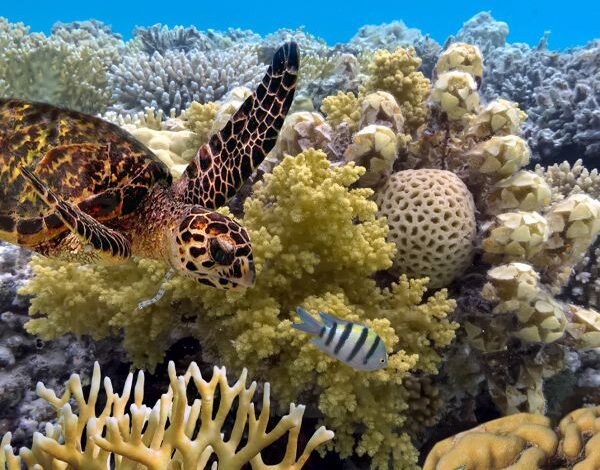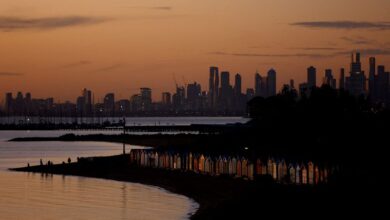Great Barrier Reef

The Great Barrier Reef, which extends for over 2,300 kilometers (1429 miles) along the northeastern coast of Australia, is home to over 9,000 known species. There are likely many more—new discoveries are frequently being made, including a new species of branching coral discovered in 2017. This richness and uniqueness make the reef crucial for tourism and the Australian economy—it attracts at least 1.6 million visitors every year. Yet the reef’s true value, its biodiversity, extends far beyond dollars and cents.
The Great Barrier Reef consists of about 3,000 individual reefs of coral, and the biodiversity they contain is remarkable. There are animals you would probably recognize, such as dolphins, turtles, crocodiles, and sharks. There are also venomous sea snakes, brightly colored worms, and large algae. These species interact to form a complex and delicate ecosystem dependent on the coral reef for survival. Yet today the coral—and therefore all the organisms that depend on it—is gravely at risk.
Coral is made up of many small animals. These tiny animals build a hard external skeleton to make the vibrant structures that we recognize. When healthy, coral has a symbiotic relationship with algae. The coral produces fluorescent chemicals that protect the algae from bright sun—almost like a sunscreen. The algae use photosynthesis to harness solar energy to make sugars. In this way, the algae provide food and oxygen (a byproduct of photosynthesis) for the coral, and the coral protects and provides nutrients for the algae. The algae also give coral its many colors.
The coral and algae have evolved together to survive within a particular temperature range. As sea temperatures rise due to climate change, the algae begin to produce products toxic to the coral, which in turn expel the algae. This process is called bleaching because the coral becomes white. A 2018 study showed that about one-third of the Great Barrier Reef had experienced substantial damage from bleaching. The researchers also found that large amounts of coral had died in the warming water almost immediately—even before there was time to expel their algal partners. This suggests even greater risks from climate change than scientists had previously thought.
Climate change is not the only threat to the reef. Chemical runoff and other forms of pollution, coastal development, and overfishing all can harm coral and reduce biodiversity. So can large storms such as cyclones. Species that live in the reef can also cause damage. One major pest species is the crown-of-thorns starfish (Acanthaster planci). A starfish may sound harmless, but these venomous creatures voraciously eat coral. Every so often, their numbers spike. Some scientists think these starfish caused over half of the reef damage from 1985 to 2012.
Fortunately, many people are passionate about protecting the Great Barrier Reef. National Geographic Explorer Dr. Erika S. Woolsey conducts research on coral reefs. Dr. Woolsey is the CEO of the nonprofit organization, The Hydrous. (The adjective hydrous means “containing water.”) Woolsey and her colleagues use virtual reality to create 3D versions of specimens that can be viewed in a laboratory. Scientists can see damage to the reef over time and take detailed measurements of every nook and cranny—without having to get wet! People around the world can access images of reef structures to study, thereby contributing to our knowledge of the reef.
So, is there still hope for the Great Barrier Reef? People are making a determined effort to help, and there are things that you can do right at home. Because climate change is an important cause of damage to the reef, efforts to fight it matter. In 2015, 195 countries signed the Paris Climate Agreement, committing to work to reduce carbon emissions and taking other steps to address climate change. You can contact your representatives in Congress to urge the United States to rejoin the Paris Climate Agreement.
You can also make changes in your own life to use less energy, produce less waste, choose environmentally friendly products, and be informed. Even your diet can make a difference: eating locally sourced foods that don’t have to be shipped to your neighborhood reduces carbon emissions. You can even be a citizen scientist and collect data for scientists if you visit the reef.
In a 2017 presentation, Dr. Woolsey explained why it is so important to protect reefs: “Coral reefs . . . provide food and livelihoods for hundreds of millions of people around the world, they protect shorelines from erosion, and they contain compounds that are used to treat human ailments. . . . Even though they cover less than one percent of the sea floor, they harbor about a quarter of all marine biodiversity.”





